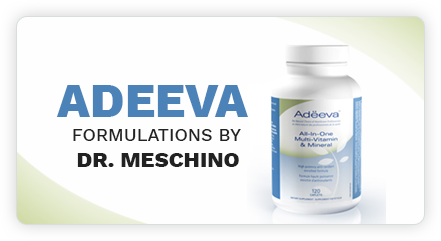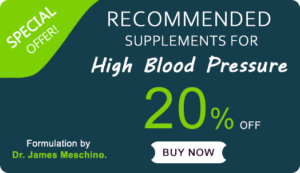
LMU 78 – The Mighty Mineral: Magnesium's Impact on Blood Pressure
Source: American Journal of Clinical Nutrition (September 2017)
Lifestyle Medicine Update (January 19, 2017)
Introduction
In the intricate tapestry of human health, the quest for solutions to prevailing health issues often takes researchers on a journey of exploration. In September 2017, the American Journal of Clinical Nutrition bore witness to a study that ventured into the realm of magnesium supplementation. This study, resplendent in its pursuit of understanding, delved into the impact of magnesium on blood pressure levels among individuals with prediabetes, insulin resistance, or noncommunicable chronic diseases. This endeavor sought to unravel the connection between magnesium supplementation and blood pressure reduction, casting light on a vital aspect of human well-being.
Unravelling the Study: Magnesium’s Role in Blood Pressure Regulation
Guided by the spirit of scientific inquiry, the study unfurled its methodology. The focus rested on individuals harboring prediabetic conditions, insulin resistance, or chronic noncommunicable diseases. A mosaic of eleven randomized controlled trials emerged as the foundation for this exploration. These trials wove a narrative that encapsulated magnesium supplementation’s potential to curtail high blood pressure in individuals bearing this unique profile.
As the pieces of evidence coalesced, the study laid bare its findings. Among the eleven trials, a total of 543 subjects with varying follow-up periods, spanning from 1 to 6 months, formed the canvas. Within this intricate tableau, the dosage of magnesium supplementation oscillated between 365 to 450 mg/d. Baseline and trial-end blood pressure readings etched a comprehensive picture of magnesium’s impact.
Magnesium’s Silent Symphony: Unveiling the Findings
The culmination of these trials yielded a symphony of findings, resonating with profound implications. An orchestration of evidence revealed a noteworthy reduction in systolic blood pressure – a resounding decrease of over 4 mmHg (4.18 mm Hg). The diastolic counterpart, too, yielded to magnesium’s influence, witnessing a reduction of over 2 mmHg (2.27 mm Hg). Within these figures lay a testament to magnesium’s potential as a guardian against high blood pressure.
Reflections on the Study: Bridging Science and Lifestyle
Interpreting the study’s findings is akin to viewing a vibrant tapestry of health. This revelatory journey offers insights that ripple across the realm of well-being. The bridge between scientific revelation and practical application becomes apparent, invoking reflection on the avenues available for blood pressure management.
- The Weight of Health: A cornerstone of blood pressure management resides in shedding excess weight. A weight reduction of 10-15% can wield transformative effects, rendering this journey a powerful ally against high blood pressure.
- Harmony through Exercise: Aerobic exercise, a rhythmic symphony of motion, emerges as a potent strategy. A harmonious cadence of 30 minutes, at least five times a week, orchestrates a melody that harmonizes with blood pressure regulation.
- The Nutritional Ensemble: The study’s findings echo the harmony of nutrients. Calcium, a stalwart companion to magnesium, unveils its prowess in blood pressure reduction. Consideration of supplements that intertwine calcium and magnesium could thus amplify health benefits.
- The Ensemble Expands: The chorus of nutrients extends beyond calcium and magnesium. Coenzyme Q10 and Hawthorn, known for their cardiovascular contributions, stand as players in the symphony of blood pressure regulation. The resonance of beetroot juice, rich in nitrates that usher in nitric oxide release, unveils a unique path to vascular expansion and pressure reduction.
- Tempering Sodium: The wise counsel of sodium moderation finds its place in this orchestration. The act of reducing sodium intake reverberates as a vital note in the melody of blood pressure management.
Harmonizing Health: Considerations and Caveats
As the crescendo of blood pressure management unfolds, certain considerations and caveats arise. The presence of chronic kidney disease, a pivotal factor, calls for prudence in magnesium supplementation. In these instances, magnesium’s impact can be counterproductive, necessitating a nuanced approach to wellness.
Conclusion
The study published in the American Journal of Clinical Nutrition marks a chapter in the ongoing saga of health exploration. Within its pages, magnesium emerges as a silent protagonist, wielding its influence over blood pressure regulation. As science and lifestyle interweave, a holistic approach to blood pressure management materializes. Weight reduction, exercise, nutrient supplementation, sodium moderation, and mindful practices converge to form the symphony of health. This composition holds the promise of resonant health, where the rhythm of life harmonizes with vitality.
References
American Journal of Clinical Nutrition (September, 2017)
http://ajcn.nutrition.org/content/106/3/921.abstract
Eat Smart, Live Well, Look Great,
Dr. Meschino

Dr. James Meschino
ABOUT THE AUTHOR
Dr. James Meschino, DC, MS, ROHP, is an educator, author, and researcher having lectured to thousands of healthcare professionals across North America. He holds a Master’s Degree in Science with specialties in human nutrition and biology and is recognized as an expert in the field of nutrition, anti-aging, fitness, and wellness as well as the author of numerous books.













